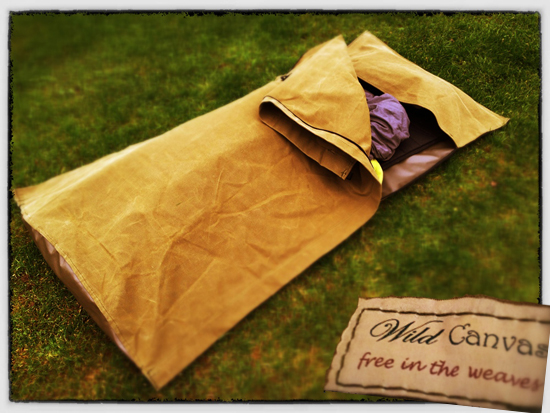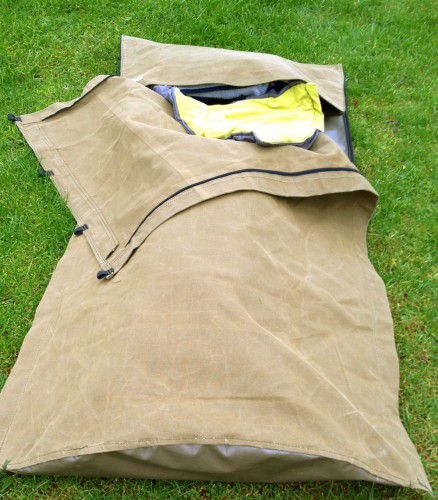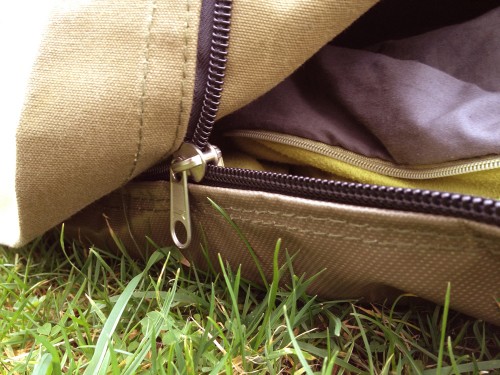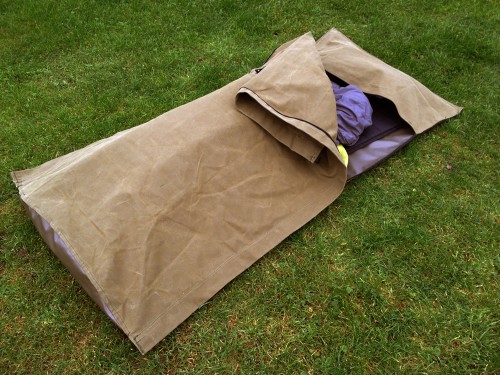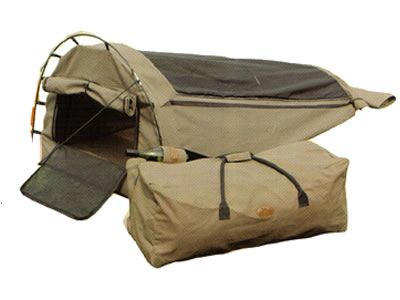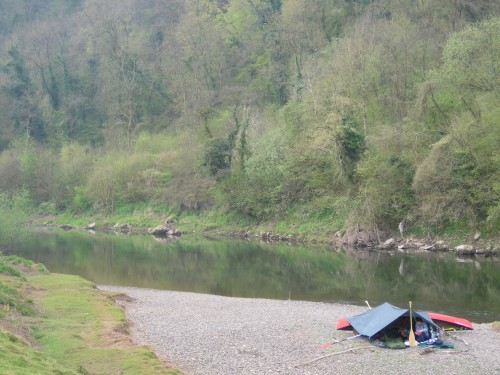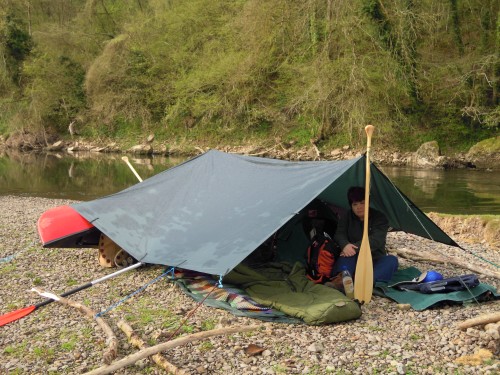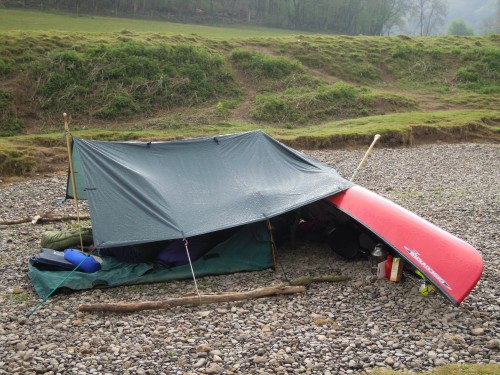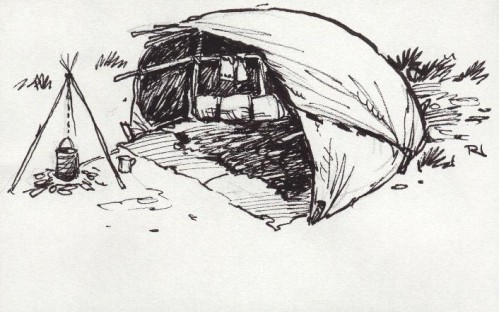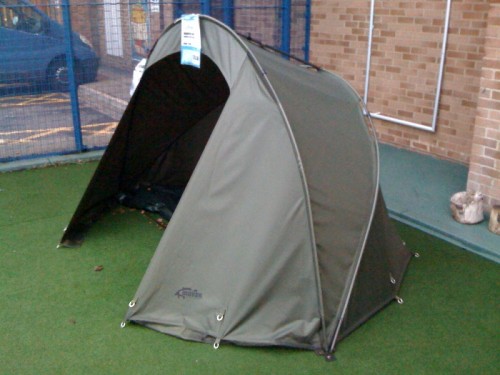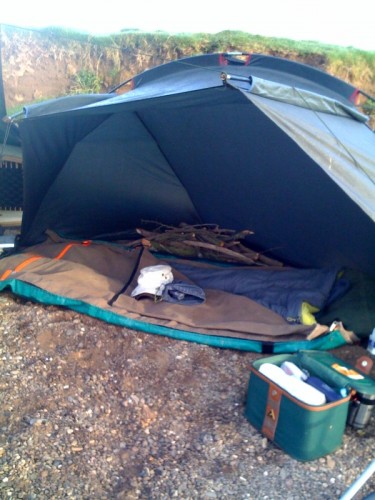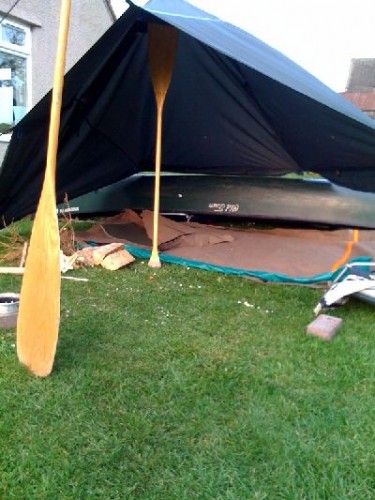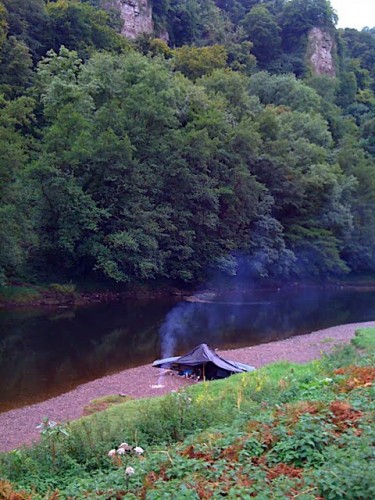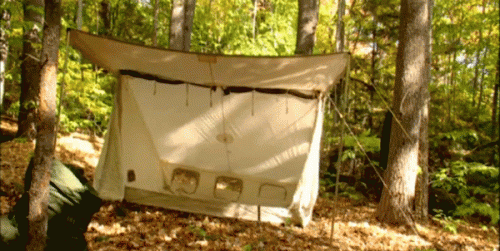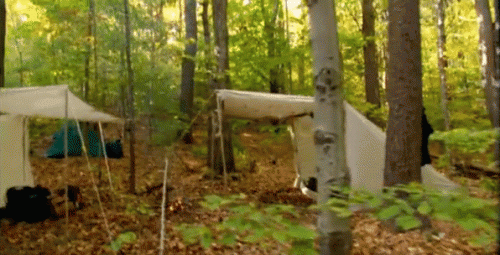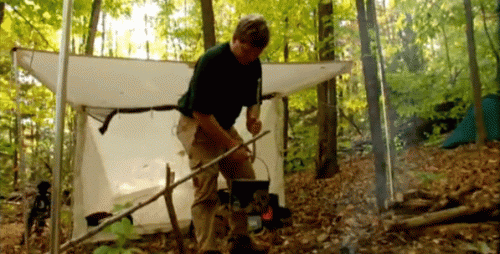Great news for anyone interested in trying swag camping: As part of our “Wynnchester Camp & Adventure” project to bring back robust traditionally-inspired canvas camp gear we’ve been working with a small UK manufacturer on our own design of Australian-style canvas swag bedrolls right here in the U.K. [Edit: we’re no longer working with “Wild Canvas” for this project due to various issues and have a new UK supplier]. Previously the only option was to buy from Australia with shipping costs often being more than the cost of the swag! To my knowledge they are the only Australian swag bedrolls being made in Europe. They are available now to buy online from www.wynnchester.co.uk.
So: After a year of design and planning I’ve just had the first batch of the product through, and I have to say it is truly a thing of beauty! Have a look at the pictures below and see what you think.
Based on many years of swag camping in different types of australian swags, for different purposes, 4×4 trips, canoe trips, car-camping and family camps, and in different environments: from the Australian desert to the British winter, at designated camp sites, or wild camps in woodland, mountainsides, beach camping and on river banks and lake shores, we’ve been able to design this one from the ground up, with some new features based on real-world use, and also we’ve avoided too many unnecessary features, velcro, guy ropes, or bright colours which many modern australian swags suffer from – this is true to the traditional swag in design and purpose and also I think it is a thing of beauty that you can cherish and get many years of use from, hopefully taking you to some wild places and enabling you to experience wild camping at it’s best, and at it’s simplest. Here’s some of the design and manufacturing features:
- Tough, waterproof and beautiful high quality 18oz canvas – in khaki and green natural colours
- Tough waterproof PVC base – again sourced in natural khaki colour rather than the often garish bright colours PVC often comes in.
- Full-length, heavyweight zips – on both sides so you can enter and exit either side away from the wind, towards your campfire etc.
- Pillow pocket to stuff your clothes, valuables, torch etc. in during the night
- The design is made to form a natural dome shape over you when inside to shed rain
- Storm flap which folds down blanket-style for good weather, meaning you can sleep open to the stars when the weather permits, and even if it changes during the night you can just pull the storm flap over and run the zips up past your head for more protection from wind and rain in the weather turns. Or add one or two poles to give extra internal space and further help to shed rain. Making the change easily without getting out in the middle of the night is very useful, unlike some swags.
- Tough enough to walk on and sit on around camp or to unpack or sort your gear whilst it protects your sleeping bag etc. from mud, damp and dirt around camp.
- Elipse-shaped foot section
- Again the design is specifically worked out so that unlike a lot of Australian swags with boxed sections and hoods etc. this one will fold very flat meaning it rolls up into a much smaller package for travel and storage.
- Webbing loops for attaching paracord to
- Large size fits a 6-footer plus – one of the great things about swags is they are naturally roomy inside, allowing you to move around comfortably in your sleeping bag or just using blankets.
- A hoop seam for fitting the aluminium pole kit if required.
- Can be used with any type of mattress or none (if camping on sand for example) – thermarest, small air mattress, foam camping mattress or the army type roll matt.
- Rolls up very small compared to other swags, with carry handle and buckle clips.
- no guy ropes or pegs needed
If you’re wondering what the fuss is about, see our full posts on swag camping for more info on this great way to get out in nature. The swags are on sale at www.wynnchester.co.uk. The price is not cheap but remember these will last a long time, putting up with rough treatment and sparks from a campfire. Then there’s the quality: the canvas is very tough 18oz weight and the very best money can buy, very hard to get hold of in fact, and that these swags are hand-made by specialists.
Compare this also with what’s available that is similar such as the Duluth Bedroll in the USA at 180 US dollars or the cost of buying a swag direct from Oz coming in at around the £200 mark just for the shipping! So yes it’s not a cheap throwaway item, but I can say from experience that even one amazing night out under the stars in some remote (or even not so remote) location and it will be well worth the investment. Knowing you can do that again in other places, whenever you want, as they say at Mastercard “priceless”.
OK here’s the pics: (click for full size images: note the colours are not exactly right in these pictures, the canvas is more of a green khaki than this brown – I’ll get more pics as soon as I have them).
The swag rolled up with carry handle – the rolled up swag measures about 60cms long by about 25cms width:

The storm flap open for good weather and easy access: this pic also shows the elipsed foot section and the natural dome shape that helps to shed rain.
The heavy duty zips with snug overlap where the canvas joins the PVC:
Photos showing thermarest self-inflating mattress and sleeping bag arrangement, with the pillow pocket and storm flap:
The full Wynnchester canvas bedroll/swag – simple, elegant and above all TOUGH as nails!:
[Update: there are new photos of the latest model in a darker green khaki colour with twin pre-curved aluminium poles on the website at www.wynnchester.co.uk. ]

